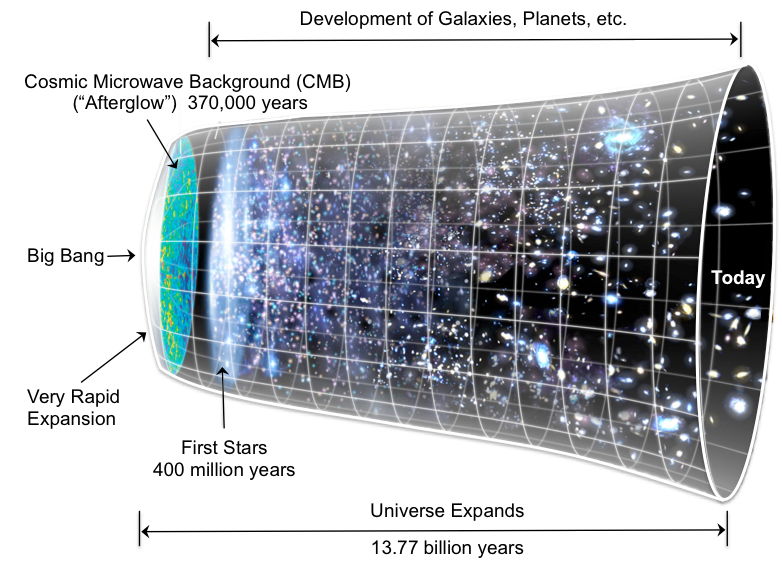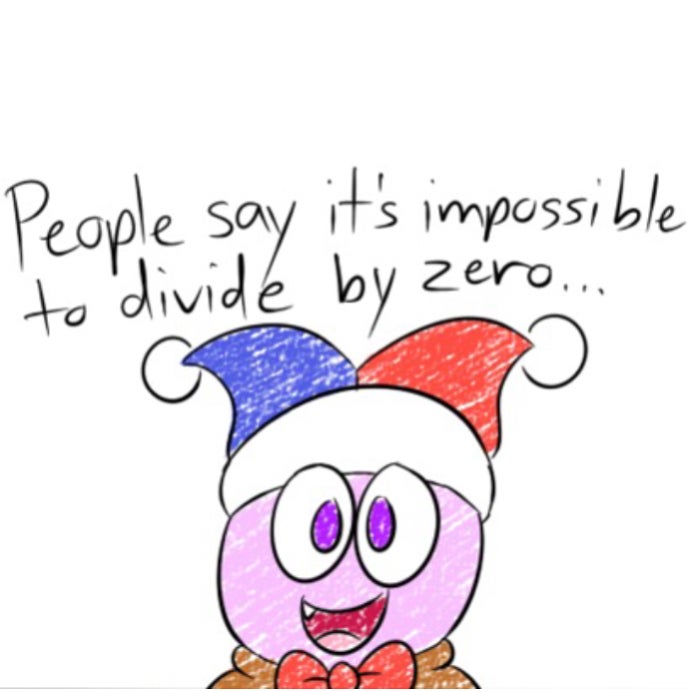Formula Derivations for PolyhedraThe Whistler Alley pages addressing Platonic solids make repeated use of several formulas. Those formulas and their derivations are explained more thoroughly below.The Dihedral AngleA dihedral angle is the angle of intersection of two planes. It is the measure of an angle having its vertex on the intersecting edge and one side in each of the planes. The sides of the angle are perpendicular to the intersecting edge.In the context of polyhedra, a dihedral angle is the angle of intersection of two adjacent faces. For each of the Platonic solids, there is only one dihedral angle, because all pairs of adjacent faces intersect at the same angle.
Other CasesCertain other cases should be addressed. Up at the top, it is given that α and γ are acute. The first version of this derivation did not have that condition. Twelve years later, an alert reader pointed out that the substitutions AF = cosα and AG = cosγ were valid only for acute angles α and γ. Fortunately, the formula still holds up in spite of that lapse. In obtuse cases AF and AG may be taken as directed distances, with respect to AB and AC. Either of them may be negative or zero. The result is that FQ is a directed distance with respect to DQ. Where FQ is negative, the dihedral angle θ is obtuse.Another issue arises in the middle. Although there is no problem with the final formula, some of the intermediate expressions may have division by zero. This occurs where one or more of the polygon angles are right angles. Such a case is not at all unusual where building polyhedra with regular polygon faces. Note that the final form of the formula involves a denominator that cannot possibly be zero. This case still must be proved separately (by someone else). The formula applies only to cases in which exactly three faces meet at a vertex. There can be no general formula for a case in which more than three faces meet, because those faces by themselves would not form a rigid structure. http://whistleralley.com/polyhedra/derivations.htm Wasan Geometry and Division by Zero Calculus 2018年11月28日(水) テーマ:数学 Sangaku Journal of Mathematics (SJM) ⃝c SJM ISSN 2534-9562 Volume 2 (2018), pp. 57-73 Received 20 November 2018. Published on-line 29 November 2018 web: http://www.sangaku-journal.eu/ ⃝c The Author(s) This article is published with open access1 . Wasan Geometry and Division by Zero Calculus file:///C:/Users/saito%20saburo/Downloads/SJM_2018_57-73_okumura_saitoh%20(1).pdf ゼロ除算の発見は日本です: ∞??? ∞は定まった数ではない・・・・ 人工知能はゼロ除算ができるでしょうか: とても興味深く読みました:2014年2月2日 4周年を超えました: ゼロ除算の発見と重要性を指摘した:日本、再生核研究所 \documentclass[12pt]{article} \usepackage{latexsym,amsmath,amssymb,amsfonts,amstext,amsthm} \numberwithin{equation}{section} \begin{document} \title{\bf Announcement 461: An essence of division by zero and a new axiom} \author{{\it Institute of Reproducing Kernels}\\ kbdmm360@yahoo.co.jp } \date{2018.11.10} \maketitle In order to see an essence of our division by zero calculus, we will state a simple survey. As the number system, division by zero is realized as the {\bf Yamada field} with the definition of the general fractions $a/b$ containing the case $b=0$, and its various meanings and applications are given. In particular, see \cite{msy} and see also the references. The field structure is, of course, fundamental in the algebraic structure. However, apart from various motivations and any background, we will give the definition of the division by zero calculus as follows: \medskip For any \index{Laurent expansion}Laurent expansion around $z=a$, \begin{equation} \label{dvc5.1} f(z) = \sum_{n=-\infty}^{-1} C_n (z - a)^n + C_0 + \sum_{n=1}^{\infty} C_n (z - a)^n \end{equation} we define the division by zero calculus \begin{equation}\label{dvc5.2} f(a) = C_0. \end{equation} For the correspondence \eqref{dvc5.2} for the function $f(z)$, we will call it {\bf the division by zero calculus}. By considering derivatives in \eqref{dvc5.1}, we {\bf define} any order derivatives of the function $f$ at the singular point $a$ as $$ f^{(n)}(a) = n! C_n. $$ \medskip The division by zero calculus seems to be strange firstly, however, by its various applications and results, we will see that the concept is fundamental in our elementary mathematics, globally. See the references. For its importance, the division by zero calculus may be looked as a {\bf new axiom.} \medskip Firstly, for the fundamental function $W= F(z) = 1/z$, we have, surprisingly $$ F(0) = 0. $$ We see its great impacts to our basic idea for the space and in our Euclidean space. From the form, we should consider that \begin{equation} \frac{1}{0} =0. \end{equation} Note that this representation and identity is not any result, but it is only the definition of $\frac{1}{0}$. Of course, it is not the usual definition as the solution of the equation $0 \cdot z =1$. Here, we are stating that the division by zero calculus and the form of the elementary function lead us to the identity (0.3). \medskip \bigskip {\bf \Large Could we divide the numbers and functions by zero?} \medskip For this old and general question, we will give a simple answer. For any analytic function $f(z)$ around the origin $z=0$ that is permitted to have any singularity at $z=0$ (of course, any constant function is permitted), we can consider the value, by the division by zero calculus \begin{equation} \frac{f(z)}{z^n} \end{equation} at the point $z=0$, for any positive integer $n$. This will mean that from the form we can consider it as follows: \begin{equation} \frac{f(z)}{z^n}\mid_{x=0}. \end{equation} \bigskip For example, $$ \frac{e^{x}}{x^n}\mid_{x=0} = \frac{1}{n!}. $$ \medskip {\bf \Huge In this sense, we can divide the numbers and analytic functions by zero.} \bibliographystyle{plain} \begin{thebibliography}{10} \documentclass[12pt]{article} \usepackage{latexsym,amsmath,amssymb,amsfonts,amstext,amsthm} \numberwithin{equation}{section} \begin{document} \title{\bf Announcement 460: Change the Poor Idea to the Definite Results For the Division by Zero -- For the Leading Mathematicians} \author{{\it Institute of Reproducing Kernels}\\ kbdmm360@yahoo.co.jp } \date{2018.11.08} \maketitle The Institute of Reproducing Kernels is dealing with the theory of division by zero calculus and declares that the division by zero was discovered as $0/0=1/0=z/0=0$ in a natural sense on 2014.2.2. The result shows a new basic idea on the universe and space based on the new concept of division by zero calculus: for the function $f(z) = 1/z$ $$ f(0) = 0 $$ since Aristotelēs (BC384 - BC322) and Euclid (BC 3 Century - ), and the division by zero is since Brahmagupta (598 - 668 ?). In particular, Brahmagupta defined as $0/0=0$ in Brāhmasphuṭasiddhānta (628), however, our world history stated that his definition $0/0=0$ is wrong over 1300 years, but, we showed that his definition is suitable. For the details, see the site: http://okmr.yamatoblog.net/ \medskip In the international conference: \medskip http://www.meetingsint.com/conferences/\\appliedphysics-mathematics\\Applied Physics and Mathematics Conference 2018\\ \medskip \noindent we presented the basic results on October 23 and for the details, see the references with the talk sheets: saburousaitoh 181102.pdf : {\Huge \bf Close the mysterious and long history of division by zero and \\ open the new world\\ since Aristoteles-Euclid:\\ $1/0=0/0=z/0= \tan (\pi/2)=0$\\ } and the abstract: 201810.23abstract. \bigskip Particularly, note that the division by zero calculus is a fundamental definition based on the basic assumption that may be considered as a new axiom for its importance. As stated by some physicist \medskip {\it Here is how I see the problem with prohibition on division by zero, which is the biggest scandal in modern mathematics as you rightly pointed out} (2017.10.14.08:55), \medskip \noindent it seems that the long history of the division by zero is our shame and our mathematics in the elementary level has basic missings. Meanwhile, we have still great confusions and wrong ideas on the division by zero. Therefore, we would like to ask for the good corrections for the wrong ideas and some official approval for our division by zero as our basic duties. \bibliographystyle{plain} \begin{thebibliography}{10} \bibitem{kmsy} M. Kuroda, H. Michiwaki, S. Saitoh, and M. Yamane, New meanings of the division by zero and interpretations on $100/0=0$ and on $0/0=0$, Int. J. Appl. Math. {\bf 27} (2014), no 2, pp. 191-198, DOI: 10.12732/ijam.v27i2.9. \bibitem{ms16} T. Matsuura and S. Saitoh, Matrices and division by zero $z/0=0$, Advances in Linear Algebra \& Matrix Theory, {\bf 6}(2016), 51-58 Published Online June 2016 in SciRes. http://www.scirp.org/journal/alamt \\ http://dx.doi.org/10.4236/alamt.2016.62007. \bibitem{mms18} T. Matsuura, H. Michiwaki and S. Saitoh, $\log 0= \log \infty =0$ and applications. Differential and Difference Equations with Applications. Springer Proceedings in Mathematics \& Statistics. {\bf 230} (2018), 293-305. \bibitem{msy} H. Michiwaki, S. Saitoh and M.Yamada, Reality of the division by zero $z/0=0$. IJAPM International J. of Applied Physics and Math. {\bf 6}(2015), 1--8. http://www.ijapm.org/show-63-504-1.html \bibitem{mos} H. Michiwaki, H. Okumura and S. Saitoh, Division by Zero $z/0 = 0$ in Euclidean Spaces, International Journal of Mathematics and Computation, {\bf 2}8(2017); Issue 1, 1-16. \bibitem{osm} H. Okumura, S. Saitoh and T. Matsuura, Relations of $0$ and $\infty$, Journal of Technology and Social Science (JTSS), {\bf 1}(2017), 70-77. \bibitem{os} H. Okumura and S. Saitoh, The Descartes circles theorem and division by zero calculus. https://arxiv.org/abs/1711.04961 (2017.11.14). \bibitem{o} H. Okumura, Wasan geometry with the division by 0. https://arxiv.org/abs/1711.06947 International Journal of Geometry. \bibitem{os18april} H. Okumura and S. Saitoh, Harmonic Mean and Division by Zero, Dedicated to Professor Josip Pe\v{c}ari\'{c} on the occasion of his 70th birthday, Forum Geometricorum, {\bf 18} (2018), 155—159. \bibitem{os18} H. Okumura and S. Saitoh, Remarks for The Twin Circles of Archimedes in a Skewed Arbelos by H. Okumura and M. Watanabe, Forum Geometricorum, {\bf 18}(2018), 97-100. \bibitem{os18e} H. Okumura and S. Saitoh, Applications of the division by zero calculus to Wasan geometry. GLOBAL JOURNAL OF ADVANCED RESEARCH ON CLASSICAL AND MODERN GEOMETRIES” (GJARCMG), {\bf 7}(2018), 2, 44--49. \bibitem{ps18} S. Pinelas and S. Saitoh, Division by zero calculus and differential equations. Differential and Difference Equations with Applications. Springer Proceedings in Mathematics \& Statistics. {\bf 230} (2018), 399-418. \bibitem{s14} S. Saitoh, Generalized inversions of Hadamard and tensor products for matrices, Advances in Linear Algebra \& Matrix Theory. {\bf 4} (2014), no. 2, 87--95. http://www.scirp.org/journal/ALAMT/ \bibitem{s16} S. Saitoh, A reproducing kernel theory with some general applications, Qian,T./Rodino,L.(eds.): Mathematical Analysis, Probability and Applications - Plenary Lectures: Isaac 2015, Macau, China, Springer Proceedings in Mathematics and Statistics, {\bf 177}(2016), 151-182. \bibitem{s17} S. Saitoh, Mysterious Properties of the Point at Infinity, arXiv:1712.09467 [math.GM](2017.12.17). \bibitem{ttk} S.-E. Takahasi, M. Tsukada and Y. Kobayashi, Classification of continuous fractional binary operations on the real and complex fields, Tokyo Journal of Mathematics, {\bf 38}(2015), no. 2, 369-380. \end{thebibliography} \end{document} \documentclass[12pt]{article} \usepackage{latexsym,amsmath,amssymb,amsfonts,amstext,amsthm} \numberwithin{equation}{section} \begin{document} \title{\bf Announcement 454: The International Conference on Applied Physics and Mathematics, Tokyo, Japan, October 22-23} \author{{\it Institute of Reproducing Kernels}\\ kbdmm360@yahoo.co.jp } \date{2018.9.29} \maketitle {\Large \bf The Institute of Reproducing Kernels is dealing with the theory of division by zero calculus and declares that the division by zero was discovered as $0/0=1/0=z/0=0$ in a natural sense on 2014.2.2. The result shows a new basic idea on the universe and space based on the new concept of division by zero calculus: for the function $f(z) = 1/z$ $$ f(0) = 0 $$ since Aristotelēs (BC384 - BC322) and Euclid (BC 3 Century - ), and the division by zero is since Brahmagupta (598 - 668 ?). In particular, Brahmagupta defined as $0/0=0$ in Brāhmasphuṭasiddhānta (628), however, our world history stated that his definition $0/0=0$ is wrong over 1300 years, but, we showed that his definition is suitable. For the details, see the site: http://okmr.yamatoblog.net/ \medskip In the above international conference: \medskip \medskip John Martin, Program Coordinator\\ http://www.meetingsint.com/conferences/\\appliedphysics-mathematics\\Applied Physics and Mathematics Conference 2018\\ appliedphysics@annualmeetings.net\\ appliedphysics@meetingseries.org \medskip \medskip we will present our results while 11:00-12:00, October 23 and we will accept all the related questions and comments while 13:00-15:00 around. For the details, please see the below: \medskip (If a person participates in our session around the morning and afternoon free discussions, he should pay euro 250. If the person registers in a group of 5 or more, the amount will be reduced to euro 180 per person. The morning session is very valuable and has the potential to bring change in the education system. For one night stay on 22nd October, he needs to pay euro 150. I hope everything is clear. Kindly let me know if any query. Thanks! Regards, John) } \bigskip \bigskip {\Huge \bf Close the mysterious and long history of division by zero and \\ open the new world since Aristoteles-Euclid: $1/0=0/0=z/0= \tan (\pi/2)=0.$ } \bigskip \bigskip {\large \bf For a triangle ABC with side length $a,b,c$. We have the formula $$ \frac{a^2 + b^2 - c^2}{a^2 - b^2 + c^2} = \frac{\tan B}{\tan C}. $$ If $ a^2 + b^2 - c^2 =0$, then $C = \pi/2$. Then, $$ 0 = \frac{\tan B}{\tan \frac{\pi}{2}} = \frac{\tan B}{0}. $$ Meanwhile, for the case $ a^2 - b^2 + c^2 =0, $ then $B = \pi/2$, and we have $$ \frac{a^2 + b^2 - c^2}{0}= \frac{\tan \frac{\pi}{2}}{\tan C}=0. $$ \end{document}
神の数式:
神の数式が解析関数でかけて居れば、 特異点でローラン展開して、正則部の第1項を取れば、 何時でも有限値を得るので、 形式的に無限が出ても 実は問題なく 意味を有します。
物理学者如何でしょうか。
カテゴリ:カテゴリ未分類
そこで、計算機は何時、1/0=0 ができるようになるでしょうか。 楽しみにしています。 もうできる進化した 計算機をお持ちの方は おられないですね。
これは凄い、面白い事件では? 計算機が人間を超えている 例では?
面白いことを発見しました。 計算機は 正しい答え 0/0=0
を出したのに、 この方は 間違いだと 言っている、思っているようです。
0/0=0 は 1300年も前に 算術の発見者によって与えられたにも関わらず、世界史は間違いだと とんでもないことを言ってきた。 世界史の恥。 実は a/0=0 が 何時も成り立っていた。 しかし、ここで 分数の意味を きちんと定義する必要がある。 計算機は、その意味さえ知っているようですね。 計算機、人間より賢くなっている 様が 出て居て 実に 面白い。
https://steemkr.com/utopian-io/@faisalamin/bug-zero-divide-by-zero-answers-is-zero
2018.10.11.11:23
カテゴリ:カテゴリ未分類
面白いことを発見しました。 計算機は 正しい答え 0/0=0
を出したのに、 この方は 間違いだと 言っている、思っているようです。
0/0=0 は 1300年も前に 算術の発見者によって与えられたにも関わらず、世界史は間違いだと とんでもないことを言ってきた。 実は a/0=0 が 何時も成り立っていた。しかし、ここで 分数の意味を きちんと定義する必要がある。 計算機は、その意味さえ知っているようですね。 計算機、人間より賢くなっている様が 出て居て 実に面白い。
https://steemkr.com/utopian-io/@faisalamin/bug-zero-divide-by-zero-answers-is-zero
2018.10.11.11:23
ゼロ除算、ゼロで割る問題、分からない、正しいのかなど、 良く理解できない人が 未だに 多いようです。そこで、簡潔な一般的な 解説を思い付きました。 もちろん、学会などでも述べていますが、 予断で 良く聞けないようです。まず、分数、a/b は a 割る b のことで、これは 方程式 b x=a の解のことです。ところが、 b がゼロならば、 どんな xでも 0 x =0 ですから、a がゼロでなければ、解は存在せず、 従って 100/0 など、ゼロ除算は考えられない、できないとなってしまいます。 普通の意味では ゼロ除算は 不可能であるという、世界の常識、定説です。できない、不可能であると言われれば、いろいろ考えたくなるのが、人間らしい創造の精神です。 基本方程式 b x=a が b がゼロならば解けない、解が存在しないので、困るのですが、このようなとき、従来の結果が成り立つような意味で、解が考えられないかと、数学者は良く考えて来ました。 何と、 そのような方程式は 何時でも唯一つに 一般化された意味で解をもつと考える 方法があります。 Moore-Penrose 一般化逆の考え方です。 どんな行列の 逆行列を唯一つに定める 一般的な 素晴らしい、自然な考えです。その考えだと、 b がゼロの時、解はゼロが出るので、 a/0=0 と定義するのは 当然です。 すなわち、この意味で 方程式の解を考えて 分数を考えれば、ゼロ除算は ゼロとして定まる ということです。ただ一つに定まるのですから、 この考えは 自然で、その意味を知りたいと 考えるのは、当然ではないでしょうか?初等数学全般に影響を与える ユークリッド以来の新世界が 現れてきます。
ゼロ除算の誤解は深刻:
最近、3つの事が在りました。 私の簡単な講演、相当な数学者が信じられないような誤解をして、全然理解できなく、目が回っているいるような印象を受けたこと、 相当ゼロ除算の研究をされている方が、基本を誤解されていたこと、1/0 の定義を誤解されていた。 相当な才能の持ち主が、連続性や順序に拘って、4年以上もゼロ除算の研究を避けていたこと。 これらのことは、人間如何に予断と偏見にハマった存在であるかを教えている。 まずは ゼロ除算は不可能であるの 思いが強すぎで、初めからダメ、考えない、無視の気持ちが、強い。 ゼロ除算を従来の 掛け算の逆と考えると、不可能であるが 証明されてしまうので、割り算の意味を拡張しないと、考えられない。それで、 1/0,0/0,z/0 などの意味を発見する必要がある。 それらの意味は、普通の意味ではないことの 初めの考えを飛ばして ダメ、ダメの感情が 突っ走ている。 非ユークリッド幾何学の出現や天動説が地動説に変わった世界史の事件のような 形相と言える。
2018.9.22.6:41
ゼロ除算の4つの誤解:
1. ゼロでは割れない、ゼロ除算は 不可能である との考え方に拘って、思考停止している。 普通、不可能であるは、考え方や意味を拡張して 可能にできないかと考えるのが 数学の伝統であるが、それができない。
2. 可能にする考え方が 紹介されても ゼロ除算の意味を誤解して、繰り返し間違えている。可能にする理論を 素直に理解しない、 強い従来の考えに縛られている。拘っている。
3. ゼロ除算を関数に適用すると 強力な不連続性を示すが、連続性のアリストテレス以来の 連続性の考えに囚われていて 強力な不連続性を受け入れられない。数学では、不連続性の概念を明確に持っているのに、不連続性の凄い現象に、ゼロ除算の場合には 理解できない。
4. 深刻な誤解は、ゼロ除算は本質的に定義であり、仮定に基づいているので 疑いの気持ちがぬぐえず、ダメ、怪しいと誤解している。数学が公理系に基づいた理論体系のように、ゼロ除算は 新しい仮定に基づいていること。 定義に基づいていることの認識が良く理解できず、誤解している。
George Gamow (1904-1968) Russian-born American nuclear physicist and cosmologist remarked that "it is well known to students of high school algebra" that division by zero is not valid; and Einstein admitted it as {\bf the biggest blunder of his life} [1]:1. Gamow, G., My World Line (Viking, New York). p 44, 1970.
Eπi =-1 (1748)(Leonhard Euler) E = mc 2 (1905)(Albert Einstein) 1/0=0/0=0 (2014年2月2日再生核研究所) ゼロ除算(division by zero)1/0=0/0=z/0= tan (pi/2)=0https://ameblo.jp/syoshinoris/entry-12420397278.html1+1=2 ( ) a2+b2=c2 (Pythagoras) 1/0=0/0=0(2014年2月2日再生核研究所)                        |
2018年12月27日木曜日
Formula Derivations for Polyhedra
登録:
コメントの投稿 (Atom)
0 件のコメント:
コメントを投稿